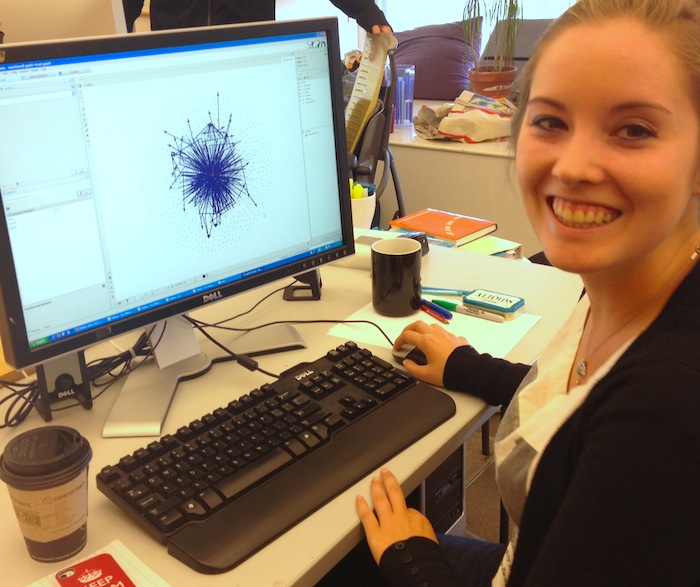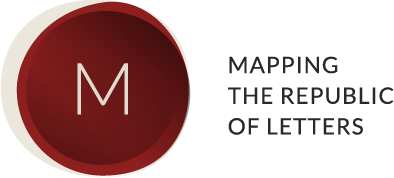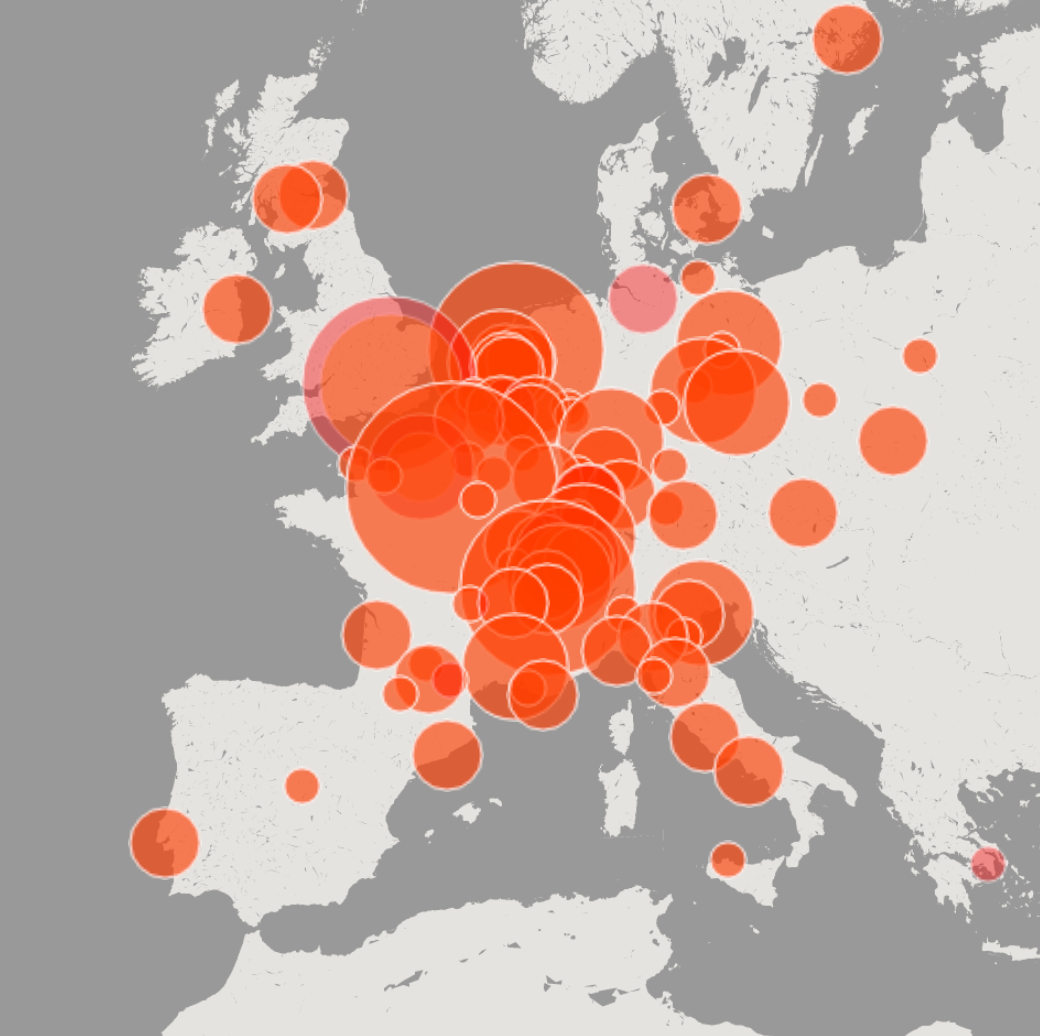- Lead: Melanie Conroy
- Start Date: August 2012
- Maria Comsa
Alice Bernard
Steven Kale
The Salons Project is mapping the intellectual and social geography of European salons from the seventeenth century to the early twentieth century. Beginning with Parisian salons in the period from 1700-1914, the project graphs the social networks of leading salonnières, charting the movement of notable intellectuals, writers, politicians, and socialites between salons, as well as the evolution of individual salons as loci for intellectual and literary exchange.
Later expansions of social networks will incorporate individuals from as many social and economic milieux as possible in order to draw a complex and accurate portrait of European high society. Further projects will cover Italian, German, and British salons in selected time periods and cities. We are currently seeking participants to compile data and analyze salons not currently in our database.
The Salons Project uses Knot, a tool developed by the Density Design Lab in Milan for the Mapping the Republic of Letters project at Stanford University. We are creating a database of notable individuals and their attendance at salons. The data consists of lists of salon attendees for a given year. The attendees (habitués) will be coded for 1) gender, 2) milieu, 3) political persuasion, 4) social status, 5) profession, and 6) intellectual or artistic affiliation. We will trace the connections that arise within and across salons and cross-reference them against familial and publishing networks. The comparison of these distinct types of networks will show whether the salons did, indeed, function as fundamental public institutions, or whether they were extensions of previously existing networks (e.g. the family, the state, political groupings, professional networks, etc.).
The visualization tools of this database will allow researchers to classify salons according to their composition (e.g. politically and/or artistically heterogeneous salons versus homogenous ones); it will also help researchers measure the intellectual and literary weight of a given salon in a particular year based on the social and literary influence of attendees. These tools will also quickly reveal the movement of notable individuals between salons, information which can be compared with publishing records to track the influence of specific literary and intellectual movements throughout European high society.
The Salons Project will construct its datasets from the mémoires of salonnières, the letters and journals of habitués, biographies of socialites, the columns of the Figaro, and the research of notable historians in French and European history agreeing to participate in the project.
Goals for the 2012-2013 academic year:
Old Regime: Melanie Conroy and Maria Comsa are working with undergraduate collaborators to organize multisource data on the salons of Old Regime France.
19th Century French Salons: Melanie Conroy is compiling a dataset based on research by Steven Kale and the Michaud biography of famous individuals.
Paris in 1900: Through a complete survey of articles in Le Figaro, Alice Bernard has completed a complex demographic survey of Parisian salons of 1900. This portrait of Parisian high society is our deepest dataset and includes precise dates for attendance, as well as family and work relationships, as they stood in 1900. This will be the most complete cross-section of French high society.
Related

Humanities+Design
Visit the laboratory web site to learn more about the visualizations.




